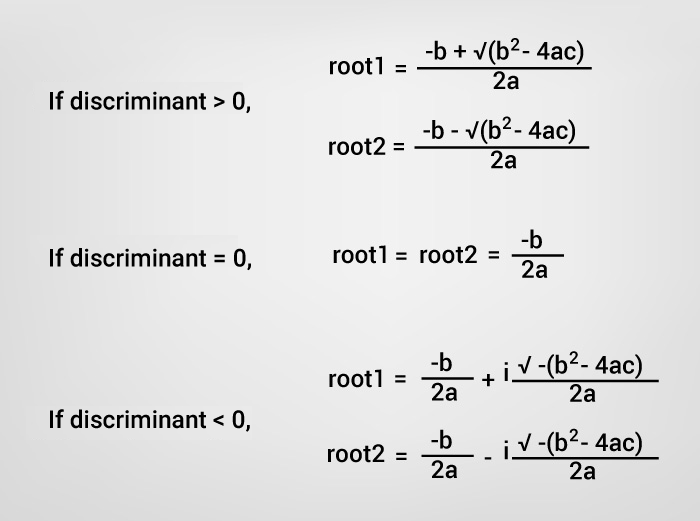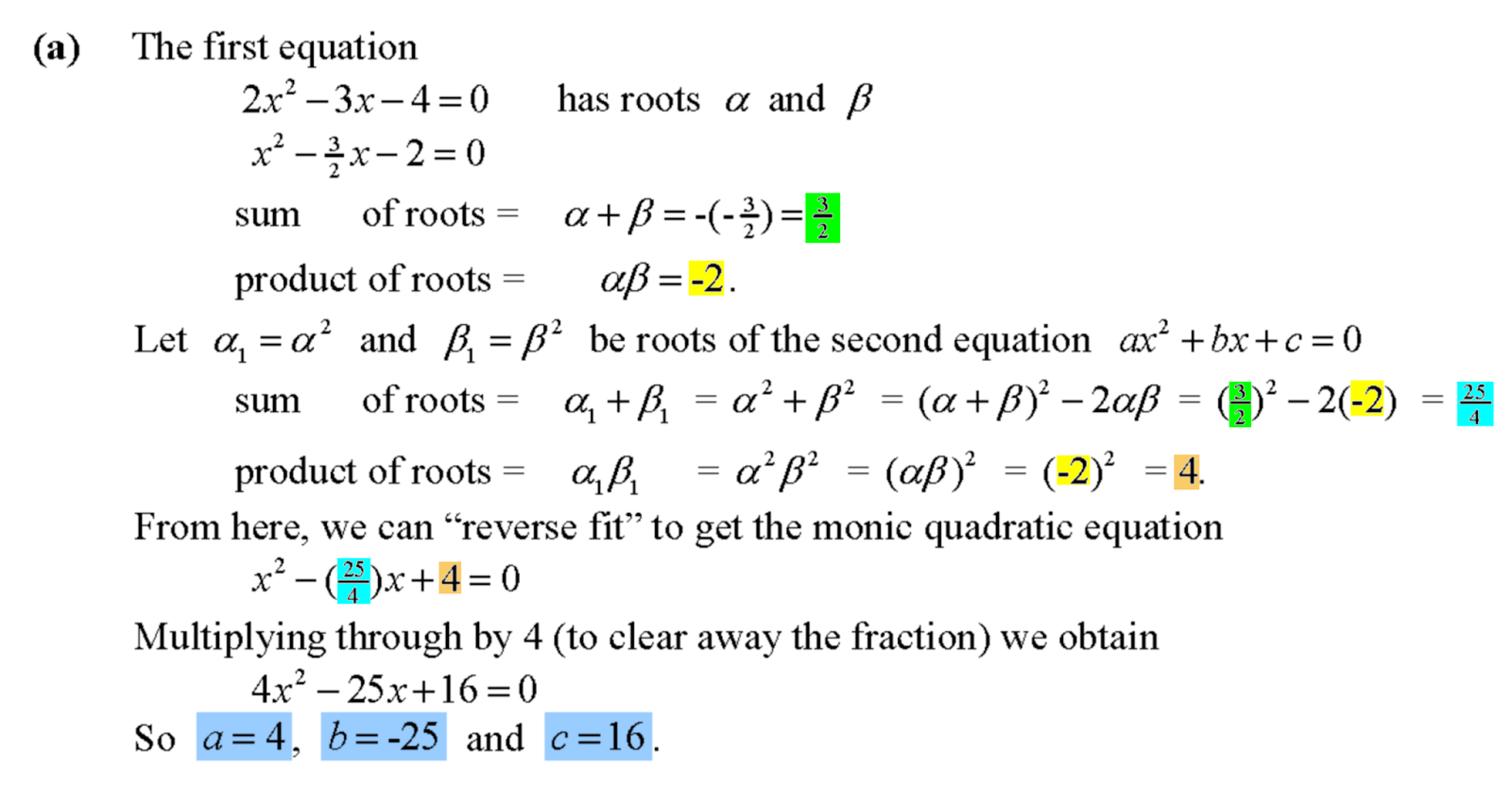

(ii) Putting x = 2, on the left side of the given equation, we get So, x = -1 is a root of the given equation. (i) Putting x = -1, on the left side of the given equation, we get
Roots of quadratic equation pdf#

Since p(-2) = \((-2)^2\) + (-2) – 2 = 4 – 2 – 2 = 0.ġ). Since y mx + b is an equation of degree one, the quadratic function, y ax2 + bx + c represents the next level of algebraic complexity.

, is equal to the sum of the equations from the quadratic formula. These roots of the quadratic equation are also. From chapter one, we have also learnt that the sum of roots. If p(x) = 0 is a quadratic equation, then the zeroes of the poynomial p(x) are called the roots of the quadratic equation p(x) = 0. The roots of a quadratic equation are the two values of x, which are obtained by solving the quadratic equation. A quadratic equation will always have two roots. Let’s begin – Roots of Quadratic Equation A quadratic equation has two roots and the roots depend on the discriminant. Discriminant (D or Δ) or determinant just determines the nature of roots of a quadratic equation.Here you will learn what are the roots of quadratic equation with examples. The only relation which establishes between equal roots of two different quadratic equations are :ĭifference of two roots of a quadratic equation is : sqrt(D)/a which is not equal to D. X 2 - (Sum of two roots)x + (Product of two roots) = 0 So we can also write a quadratic equation in this form :Ī quadratic equation is written in this form : Let x and y be the two distinct roots of quadratic equation ax 2+bx+c = 0Īnd D = b 2-4ac then xy (Product of two roots)= c/a and x+y (Sum of two roots) = -b/a. How do we understand the nature of the roots of a quadratic equation Can we classify them Watch this video to know more To learn more about Quadratic Equ.
Roots of quadratic equation plus#
The first corresponds to the case when you have repeated roots (obviously) and the second occurs when a^2b^2 - 4a^3c - 1 = 0. When a, b, and c are real numbers, a 0 and the discriminant is zero, then the roots and of the quadratic equation ax2+ bx + c 0 are real and equal. And the quadratic formula tells us that if we have something in standard form like this, that the roots of it are going to be negative b plus or minus- so that. I'm not sure what your asking here, but the quadratic discriminant is \Delta = b^2 - 4ac.


 0 kommentar(er)
0 kommentar(er)
